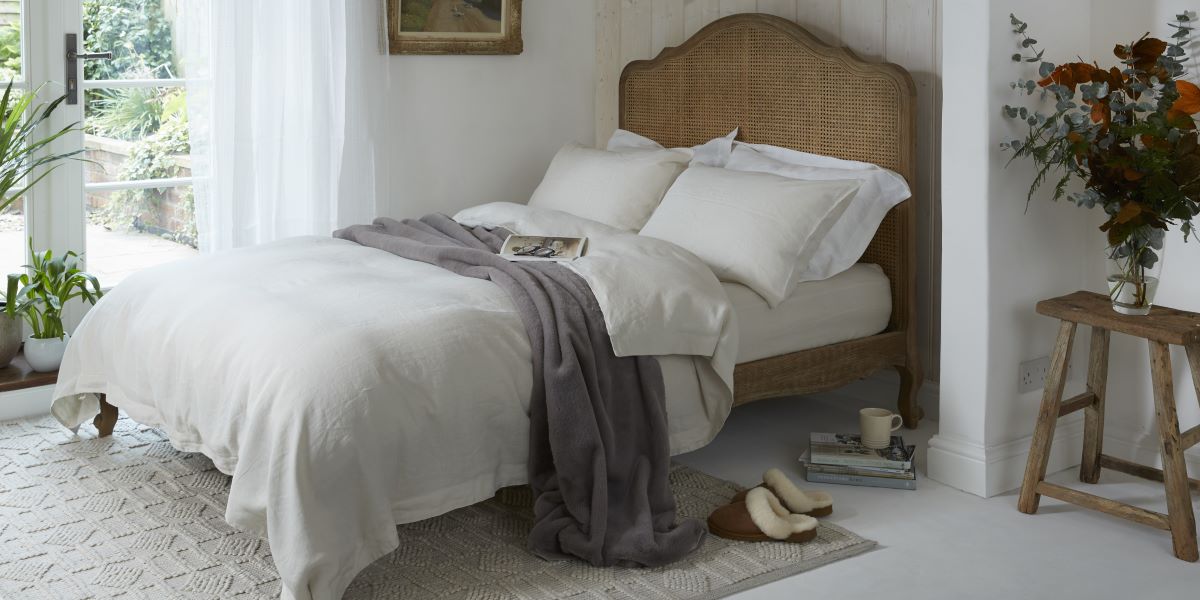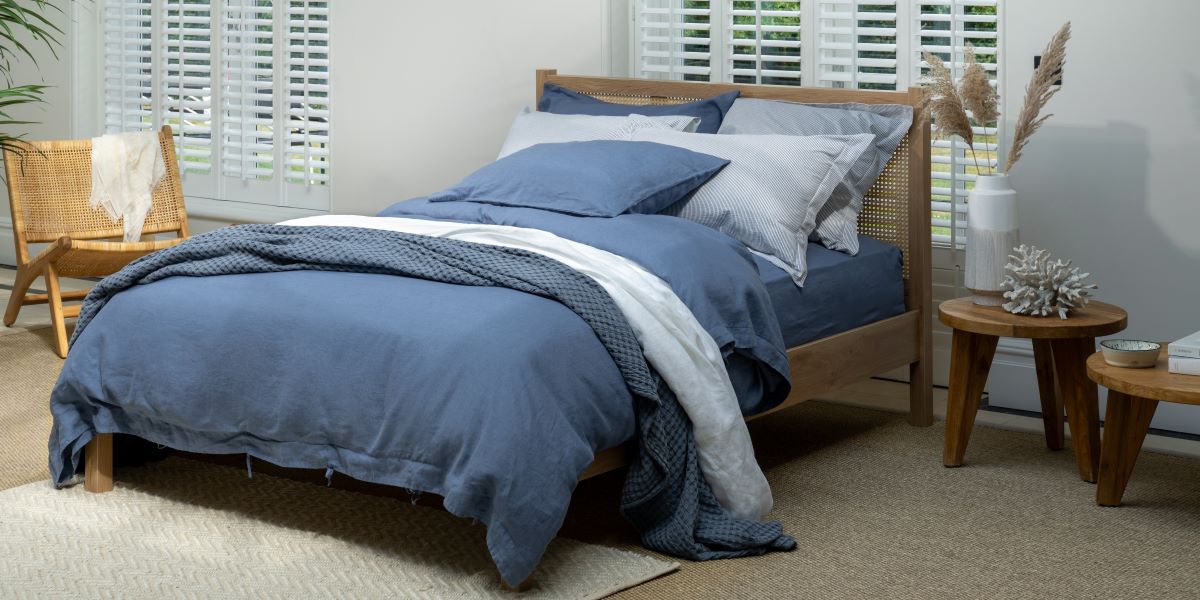There’s some misinformation out there on the internet, with many stating that thread count and its association with luxury is a myth; so, as bedding experts, we thought we’d set the record straight.
What does thread count mean?
With so much bedding jargon out there, it’s easy to feel overwhelmed by what you should be looking for when it comes to luxury quality.
One thing to look out for is thread count, which to put in simply, is a measurement of how many vertical and horizontal threads can be counted per square inch of cloth.
For example, if you weave 100 yarns in the warp (lengthwise) and 100 yarns in the weft (widthwise) then you will have a cloth that is made of 200 yarns per square inch, or in other words, 200 thread count.
How is thread count measured?
Thread count can be achieved by using single yarns in the warp and weft of the fabric as described above, or it can be achieved by plying (twisting) yarns together. Plied yarns in the UK are counted as their separate parts, so if 3 yarns are twisted together, you count the 3 yarns separately, not as one. Therefore, if you have 100 three-ply yarns per inch in the warp, and 100 three-ply yarns per inch in the weft, this creates a 600-thread count cloth.
Why is thread count important?
Thread count plays an important part in making your decision over what bed linen to buy, but it’s not the only factor that you should be thinking about. Consider also the weave, yarn quality and the origins of the fibre, because not all thread counts that are the same, are made equal.
It’s also important to remember to buy for your bedroom and lifestyle, for example, if you like a more relaxed look you may like French Linen. With its stylish, and smooth appearance it’s perfect for creating a different look.
Does a high thread count mean better quality?
Not necessarily, sometimes bed linen can be made with yarns that aren’t as fine as they could be, resulting in a stiffer, thicker cloth. It’s important when making a higher thread count to use finer yarns than those used for a lower thread count bed linen. The yarns need to be woven into the same area (one square inch) and using finer yarns creates a much softer drape and a smoother fabric, resulting in truly special bed linen.
Are lower thread counts poor quality?
Absolutely not. Low thread counts just have fewer yarns per square inch, generally, this makes them more breathable. Some customers prefer sleeping on a percale weave, which a lot of lower thread counts are, giving a cool, crisp and durable feel. Check out our 200 thread count Egyptian cotton or our GOTS certified organic cotton if this is the type of bedding you’re after.
Do different types of cotton make a difference?
Different types of cotton can make a huge difference to the hand feel of any particular thread count. Egyptian and Supima cotton fibres are finer than regular cotton which will result in a smoother softer cloth when woven.
What is Egyptian cotton? Is Egyptian Cotton good?
Learn more about the difference between Egyptian and regular cotton in our blog here.
What does weave have to do with thread count?
The type of weave, such as percale (cool and crisp) or sateen (soft and silky) has little to do with the thread count but can be used to create different finishes that compliment high and low thread counts.
Sateen weaves are looser and have more drape, and therefore lend themselves to higher thread counts, making them softer and less stiff despite more yarns being packed in per square inch. However, there are some beautiful high thread count percale weaves out there that simply use the finest yarns to maintain the cool and crisp hand-feel without it becoming too heavy.
Low thread counts generally feature more open weaves simply because the amount of yarns per square inch is low. They’re normally made in a percale weave since it’s stronger than a sateen weave and longer-lasting. It’s just a case of getting the perfect balance of durability and comforting softness that’s right for you.
Are higher thread count sheets warmer?
Whilst not strictly true, there is some foundation in this, let us explain...
Because more threads are woven per square inch in a higher thread count cloth than, let’s say, a 200-thread count, they will retain your body heat for longer. But sheets will always work with your duvet to give you a good night’s sleep, so choosing a high tog duvet (warmer) in winter, and a low tog duvet (cooler) in summer months is a better way of maintaining body heat. Alternatively, you can choose bed linen that has temperature regulating properties, and while cotton is great at doing this, linen or silk bedding is even better.

Buying Considerations
Buying bedding can be a bit of a minefield. But, once you’ve found the best bedding for your sleep haven, it’s important to care for it correctly so you can enjoy them night after night for years to come. Duvet covers are a vital ingredient to your bedding mix, so head here to learn how to look after them in the best possible way.
Bring a new lease of life to your bedroom with the perfect bed linen for you. Whether that be Egyptian cotton, silk or French linen, you’ll be sure to find that special something in our fully-stocked bed linen department.





